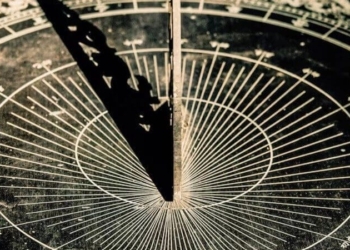Frequently seeing faces that do not actually exist, such as in clouds or on buildings, is a phenomenon so common that it has a name: Pareidolia – Illusion.
In Greek, pareidolon means “beyond the image”, simply understood as illusion or anomaly. Some scientists believe that the peculiar ability of certain individuals to find faces in everyday objects indicates a new understanding of how our brains process the external world.
Are Humans “Programmed” to See Faces?
To explore this further, Kang Lee, a professor of applied psychology and human development at the University of Toronto (Canada), has spent decades researching how infants, children, and adults process faces.
“From the moment we are born, we begin to search for faces. This is the product of millions of years of evolution. One reason is that our ancestors needed to avoid predators or find prey, all of which have faces. Secondly, humans are highly social animals. When interacting with each other, we need to know whether the other person is a friend or foe,” Professor Lee stated.

Most people will see a face in this tree stump. (photo: Getty Images).
Evolution can also explain the phenomenon of pareidolia. Since the ability to quickly recognize and respond to different faces could be a matter of life and death, failing to see a lion’s face in the bushes would come at a much higher cost than mistaking an orange and black flower for a lion’s face.
The brain is better off creating pareidolia if it means you are also ready to recognize real danger.
Which Comes First: Eyes or Brain?
The evolutionary process has programmed our brains to prioritize faces, but how exactly does it all work? That is what Professor Lee wanted to find out.
Typically, the eyes receive visual stimuli from the outside world, such as light, color, shape, and movement, and send that information to the visual cortex located in an area of the brain called the occipital lobe. After the occipital lobe processes the raw data into images, those images are sent to the frontal lobe, where higher-level processing occurs.
This conventional model is what Professor Lee refers to as “bottom-up processing,” in which the brain’s role is to passively receive information and understand it. If the brain sees faces everywhere, it is because it is reacting to stimuli that resemble faces, essentially any cluster of dots and spaces resembling two eyes, a nose, and a mouth.
However, Professor Kang Lee and other researchers began to question the bottom-up processing model. They wondered if it might be the opposite: a “top-down” process.
Professor Kang Lee explained: “We wanted to know if the frontal lobe plays a crucial role in helping us see faces. Instead of facial images coming from the outside, the brain creates some kind of expectation from the frontal lobe, which then goes back to the occipital lobe and finally to our eyes, allowing us to see the face.”
Seeing Jesus on a Toast

A 10-year-old piece of toast was sold for $28,000 in 2004. The seller claimed that after taking a bite, she saw Mother Mary looking back at her on the toast. (photo: Getty Images/AFP).
This question led Lee to think about pareidolia. He read stories about people seeing images of Jesus and angels on their toast and corn tortillas, then wondered if he could build an experiment around it.
So, Professor Lee recruited a group of ordinary people to participate in the experiment. He then connected them to an fMRI scanner and showed them a series of images with textured surfaces. Some of these images contained hidden faces, while others were pure noise.
Participants were informed that half of the images contained a (non-existent) face and were asked with each new image: “Do you see a face?” The results showed that participants reported seeing a face 34% of the time.
What fascinated Professor Lee the most were the images returned from the fMRI scanning process in real-time. When participants reported seeing a face, “the face area” of their visual cortex lit up, even when there was no face in the image. This indicated that another part of the brain had to “talk” to the visual cortex to perceive a face.
In another study titled: “Seeing Jesus in Toast: Neural Correlates and the Pareidolia Syndrome”, Lee and his colleagues reported that when the brain was “primed” to see a face, the expectation of seeing a face originated from the frontal lobe, specifically from an area known as the inferior frontal gyrus.
“It relates to creating some kind of idea and then guiding our visual cortex to look for things. If the idea is a face, then it will see a face. If the idea is Jesus, I am quite sure the cortex will see Jesus. If the idea is Elvis, then it will encounter Elvis. A lot of what we see in the world does not come from vision but from within the mind,” Professor Lee remarked.

A rock resembling the face of a man.
Professor Lee has also conducted research on infants and racial bias. He discovered that the youngest children can recognize differences between faces of all races but lose that ability as they grow older. By the age of 9 months, they can only distinguish faces of their own race. The rest begins to fade together. The reason is that they are only exposed to faces of their own race (most often their parents) during the first 9 months of life.
From his research, Professor Lee believes that racial biases are not a biological issue. We simply learn to trust those who look like the faces we have seen when our brains are developing. This can later develop into various types of biases based on social messages and patterns.
“The reason for racial biases lies in early experiences. If we create a diverse social and visual experience for children, they will be less biased,” Professor Lee emphasized.





















































